Start Me Up: 5 Power Tactics for Great Onboarding

You never get a second chance to make a first impression. Great onboarding invites you in, shows you the ropes, and helps you accomplish something you care about. It makes you feel smart, empowered, curious, and ready for more. Here are 5 design rules for tightening your funnel and turning newcomers into regulars.
1. Clarify your Message and Value Prop
It all starts during Discovery – when people first hear about your product through a friend, or via social media or advertising. That’s when initial expectations are set – they’ll either be attracted (“Sounds worth trying”) or repelled (“Not for me – gonna pass”). Strong, clear messaging about your core experience and value prop are vitally important at this stage. The better you know who you’re designing for the more crisp and targeted your Discovery messaging and acquisition funnel can be.
 Take a look at this Lumosity display ad. The tagline and messaging targets a desire for brain improvement through training. Someone who’s looking for a “magic pill” would be turned off – but anyone who worries about their mental performance and believes in the power of training would be intrigued.
Take a look at this Lumosity display ad. The tagline and messaging targets a desire for brain improvement through training. Someone who’s looking for a “magic pill” would be turned off – but anyone who worries about their mental performance and believes in the power of training would be intrigued.
When discovery happens through word of mouth, your customers will express their own take on your value prop. That’s good news – IF your product delivers on it’s promises. After a friend enthusiastically told me about learning a language for FREE on Duolingo, I decided to check it out for myself – and found that the messaging and reviews confirmed that core value prop and general excellence.
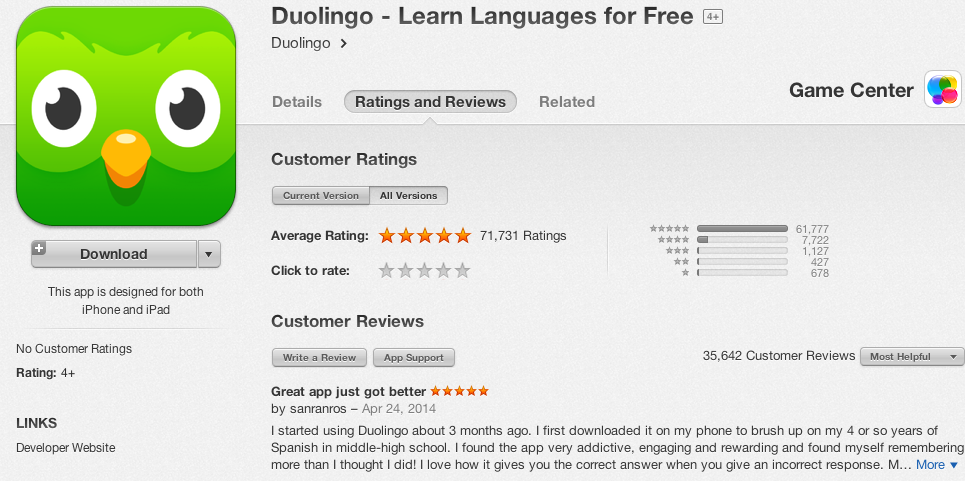
2. Welcome Newcomers and Set Expectations
When someone moves through Discovery and starts playing, they’re setting out on their own personal learning path. If you want them to become happy and engaged (as opposed to let-down and disappointed), acknowledge them and give them a clear and compelling sense of what’s to come.
How you do this, of course, depends on your product, positioning, audience, and most of all your onboarding goals. Great onboarding can be brief and to the point, if that’s what the product is all about. Check out the first few screens of Duolingo Mobile – the app does a great job of quickly setting expectations and introducing key mechanics. Since the app is free and generates value through language translation, the onboarding goal is to get people into the game as quickly as possible.
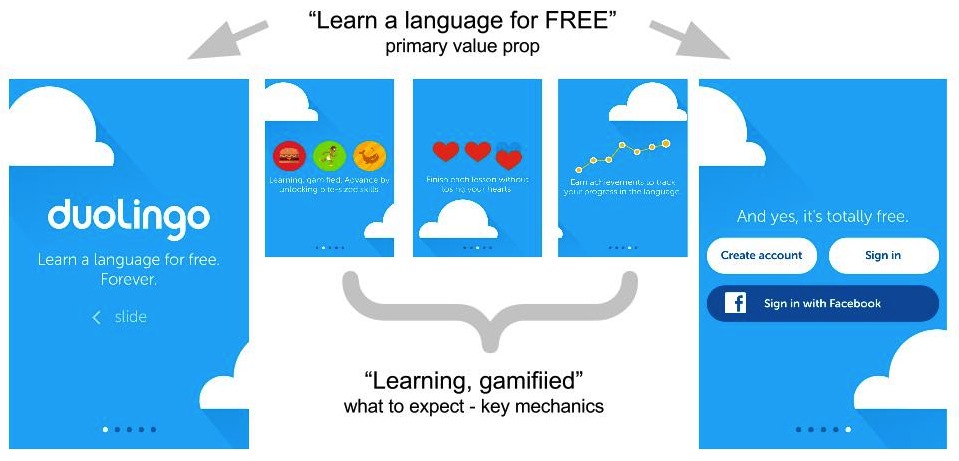
Now consider Lumosity – a subscription brain training service that offers a structured, progressive set of questions, quizzes and games which generate a “personalized” training program just for you. During this process, Lumosity gathers initial info, explains how the training works, and sets up your first workout program.
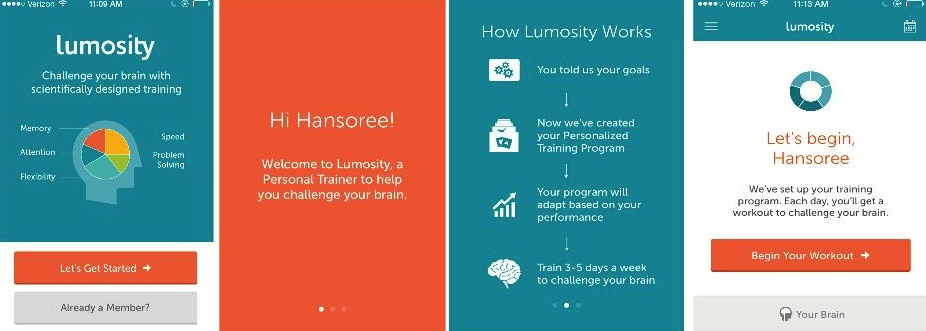
With the conversational manner of a friendly doctor or coach, Lumosity engages you in a dialogue about your performance goals and current health habits, and “prescribes” games that engage different sensory and cognitive systems. Since the goal is to get you to subscribe, this kind of structured, on-rails persuasive experience fits the problem they’re solving.
3. Help players customize their learning level and style
At the beginning of onboarding, Lumosity asks you to personalize your brain fitness goals along five dimensions – and uses your answers to customize your training program (at least in appearance – I couldn’t tell if the info was actually used).

Contrast that with Duolingo, which lets players choose a language, decide whether or not to set a goal, and start playing – with the option to test out of content if they have the proficiency. Because Duolingo is free and generates value with backend translation services, the goal is to get people playing at the right level as quickly as possible.
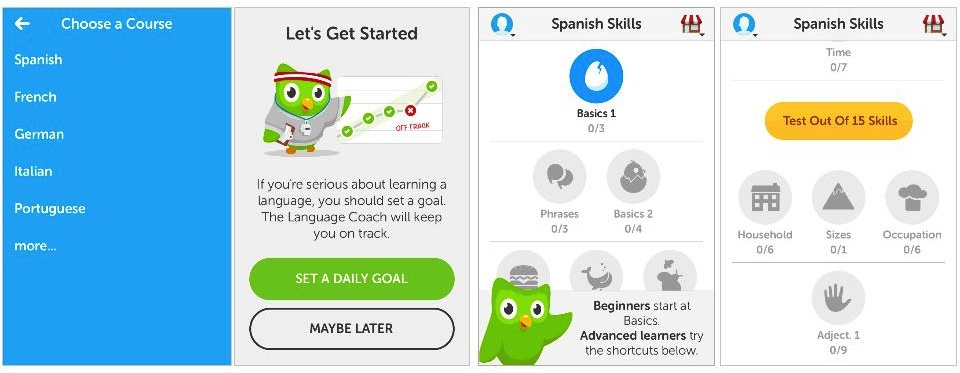
4. Provide Lightweight Activities That Build Investment
The best way to learn is to DO – with appropriate constraints, coaching and tips along the way. Great onboarding quickly engages players in activities that help them learn the ropes and invest in the experience. During onboarding, Lumosity offers short, varied games that target different brain functions. After the player completes the introductory games (first three screens below) Lumosity generates an initial BPI rating for the associated brain skills. (last screen below). This visual creates a powerful urge to see those skills improve – and thus an effective incentive to sign up for training.
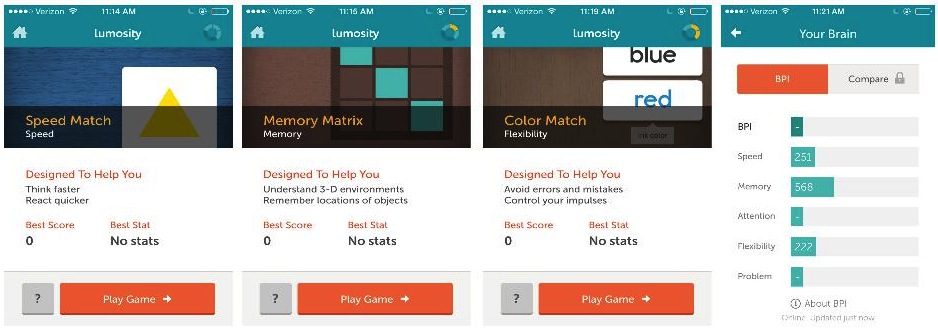
Duolingo does a great job breaking language learning into simple, varied, bite-size activities with cumulative value. As you complete activities, you progress through the system, earn levels and tokens, and unlock new content, all of which motivates you to keep playing.
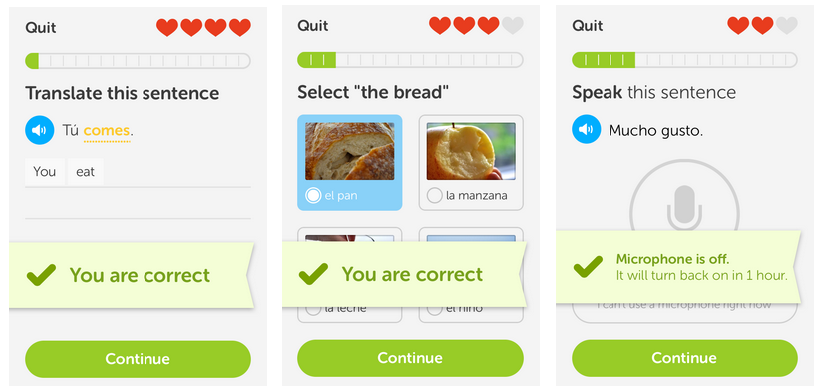
5. Show visible progress towards meaningful goals
One of the key learnings from self-determination theory (see Dan Pink and Kathy Sierra for more) is how autonomy, mastery and purpose drive intrinsic motivation. People don’t like to feel coerced; they want to see progress towards goals they’ve chosen; they’re intrinsically motivated to get better at something that matters. Don’t make that rookie mistake of “pointsification” i.e. creating a progression system without context or meaning. While that may look like visible progress, if it’s not meaningful it will ultimately backfire.
Great onboarding feels like making progress towards something you care about. Ask yourself: why are my players here? what are their goals – both short-term, and long0-term? what do they want to learn and master? Think about how you can weave those goals and aspirations into your progression system.
One straightforward approach is to ask players directly about their goals, then track and display progress against those goals. For example, Duolingo asks you to set a goal – which translates into a certain amount of effort per day – and lets you choose you starting level. When you play, the system reminds you about your goal, and confirms when you’ve reached it. If players want support sticking with the program, this feature provides useful reminders and tracking – and drive repeat visits.

Lumosity’s approach, while similar, is a bit more subtle and woven throughout the experience. During initial onboarding, the system “prescribes” short daily workouts – then reinforces that idea with a daily calendar (to promote streaks) and a mix of suggestions at the start and end of each session. Sometimes, Lumosity suggests simple lightweight goals like beating your personal best – info that’s highlighted on the game results screen, and then echoed on the workout done screen.
The power-tactics are a great starting point for turbo-charging your onboarding design. For more tips and best practices, be sure to subscribe to our newsletter.

The Value of Signaling | People Smarter Than Me
May 15, 2014 @ 5:38 pm
[…] is gamification, and within that schema are more thoughts about what signals to send. Designer Amy Jo Kim, […]
June 5, 2014 @ 1:35 pm
it so inspiring, thank you very much
A Successful Growth Cycle Depends upon Inception
January 13, 2015 @ 5:45 pm
[…] the steps out into an interactive process. Think about the learn flow process at Lumosity. This app asks the user very important questions about how they want to embody wonderful improvements in their lives. Offer these conscious […]